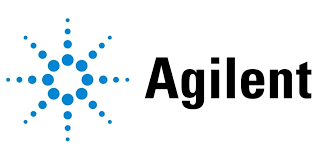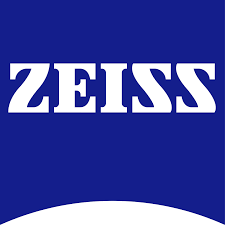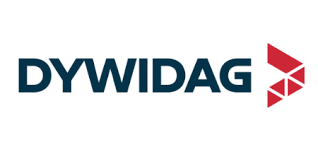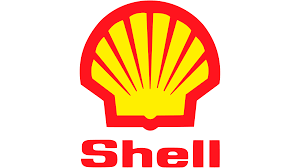Gammaaminobutyric Acid Gaba Receptor Market Report
Published Date: 15 December 2025 | Report Code: gammaaminobutyric-acid-gaba-receptor
Gammaaminobutyric Acid Gaba Receptor Market Size, Share, Industry Trends and Forecast to 2033
This market report provides a comprehensive analysis of the Gammaaminobutyric Acid Gaba Receptor market, including insights on market size, growth trajectory, and key trends from 2023 to 2033.
| Metric | Value |
|---|---|
| Study Period | 2023 - 2033 |
| 2023 Market Size | $2.50 Billion |
| CAGR (2023-2033) | 6.8% |
| 2033 Market Size | $4.91 Billion |
| Top Companies | Nutraceutical Corporation, Pharmavite LLC, Sundown Naturals, NOW Foods |
| Last Modified Date | 15 December 2025 |
Gammaaminobutyric Acid Gaba Receptor Market Report (2023 - 2033)
Gammaaminobutyric Acid Gaba Receptor Market Overview
Customize Gammaaminobutyric Acid Gaba Receptor Market Report market research report
- ✔ Get in-depth analysis of Gammaaminobutyric Acid Gaba Receptor market size, growth, and forecasts.
- ✔ Understand Gammaaminobutyric Acid Gaba Receptor's regional dynamics and industry-specific trends.
- ✔ Identify potential applications, end-user demand, and growth segments in Gammaaminobutyric Acid Gaba Receptor
What is the Market Size & CAGR of Gammaaminobutyric Acid Gaba Receptor market in 2033?
Gammaaminobutyric Acid Gaba Receptor Industry Analysis
Gammaaminobutyric Acid Gaba Receptor Market Segmentation and Scope
Tell us your focus area and get a customized research report.
Gammaaminobutyric Acid Gaba Receptor Market Analysis Report by Region
Europe Gammaaminobutyric Acid Gaba Receptor Market Report:
Europe is witnessing rapid growth in the GABA receptor market, expected to grow from $0.73 billion in 2023 to $1.43 billion by 2033. Strong regulations supporting natural health products and rising consumer awareness contribute to market expansion in this region.Asia Pacific Gammaaminobutyric Acid Gaba Receptor Market Report:
The Asia Pacific region is poised for substantial growth, with the market estimated at $0.52 billion in 2023, projected to reach $1.01 billion by 2033. Increasing healthcare awareness and rising disposable incomes contribute to this growth, along with the growing acceptance of dietary supplements.North America Gammaaminobutyric Acid Gaba Receptor Market Report:
In North America, the GABA receptor market was valued at $0.81 billion in 2023 and is anticipated to reach $1.60 billion by 2033. A sophisticated healthcare infrastructure and increasing prevalence of anxiety and sleep disorders are primary drivers of this growth.South America Gammaaminobutyric Acid Gaba Receptor Market Report:
The South American market will grow steadily, starting at $0.19 billion in 2023 and expected to reach $0.38 billion by 2033. The expansion of the health and wellness sector and rising awareness about GABA’s benefits are driving factors in this region.Middle East & Africa Gammaaminobutyric Acid Gaba Receptor Market Report:
The Middle East and Africa market is expected to grow from $0.25 billion in 2023 to $0.49 billion by 2033. This growth can be attributed to increasing healthcare initiatives and an expanding base of health-conscious consumers.Tell us your focus area and get a customized research report.
Gammaaminobutyric Acid Gaba Receptor Market Analysis By Product
Global Gamma-Aminobutyric Acid (GABA) Receptor Market, By Product Type Market Analysis (2023 - 2033)
The GABA Analog Drugs segment dominates the market, accounting for $1.67 billion in 2023 and expected to grow to $3.28 billion by 2033, maintaining a 66.8% market share. Natural Sources of GABA will also see significant growth from $0.57 billion to $1.12 billion (22.86% share), while Other Products will rise from $0.26 billion to $0.51 billion, capturing 10.34% of the market.
Gammaaminobutyric Acid Gaba Receptor Market Analysis By Application
Global Gamma-Aminobutyric Acid (GABA) Receptor Market, By Application Market Analysis (2023 - 2033)
Applications for GABA receptor products include Neurological Disorders (53.99% share) growing from $1.35 billion to $2.65 billion, Anxiety Management (21.71% share) from $0.54 billion to $1.07 billion, and Sleep Disorders (12.83% share) from $0.32 billion to $0.63 billion. Other applications such as Hypotension Support will expand from $0.29 billion to $0.56 billion (11.47% share).
Gammaaminobutyric Acid Gaba Receptor Market Analysis By Dosage Form
Global Gamma-Aminobutyric Acid (GABA) Receptor Market, By Dosage Form Market Analysis (2023 - 2033)
Tablets remain the leading format, rising from $1.35 billion to $2.65 billion (53.99% share). Capsules will grow from $0.54 billion to $1.07 billion (21.71% share), Liquid Formulations from $0.32 billion to $0.63 billion (12.83% share), and Powdered Formulations from $0.29 billion to $0.56 billion (11.47% share).
Gammaaminobutyric Acid Gaba Receptor Market Analysis By Distribution Channel
Global Gamma-Aminobutyric Acid (GABA) Receptor Market, By Distribution Channel Market Analysis (2023 - 2033)
The distribution landscape shows Online Retail as the strongest channel growing from $1.35 billion to $2.65 billion (53.99% share), followed by Pharmacies rising from $0.54 billion to $1.07 billion (21.71% share), and Health Food Stores from $0.32 billion to $0.63 billion (12.83% share). Supermarkets will also increase from $0.29 billion to $0.56 billion (11.47% share).
Gammaaminobutyric Acid Gaba Receptor Market Analysis By End User
Global Gamma-Aminobutyric Acid (GABA) Receptor Market, By End-User Market Analysis (2023 - 2033)
End-users include Hospitals (53.99% share), with GABA products seeing a rise from $1.35 billion to $2.65 billion, Clinics (21.71% share) from $0.54 billion to $1.07 billion, Home Care (12.83% share) moving from $0.32 billion to $0.63 billion, and Research Institutes (11.47% share) increasing from $0.29 billion to $0.56 billion.
Gammaaminobutyric Acid Gaba Receptor Market Trends and Future Forecast
Tell us your focus area and get a customized research report.
Global Market Leaders and Top Companies in Gammaaminobutyric Acid Gaba Receptor Industry
Nutraceutical Corporation:
A leader in the nutraceutical sector, known for manufacturing high-quality GABA products and dietary supplements focusing on mental health.Pharmavite LLC:
Renowned for their innovative GABA-enhanced supplements, Pharmavite targets the growing health-conscious consumer market.Sundown Naturals:
Specializes in natural and herbal GABA products contributing to the rising demand for herbal supplements.NOW Foods:
A pioneer in natural health products, known for extensive research and high-quality GABA supplements.We're grateful to work with incredible clients.









FAQs
What is the market size of gammaaminobutyric Acid Gaba Receptor?
The gamma-aminobutyric acid (GABA) receptor market is valued at approximately $2.5 billion in 2023, with a projected CAGR of 6.8%, indicating significant growth potential through 2033.
What are the key market players or companies in the gammaaminobutyric Acid Gaba Receptor industry?
Key players in the GABA receptor market include pharmaceutical giants and biotech companies specializing in neurological treatments, focusing on GABA analog drugs, natural sources of GABA, and innovative therapies for various disorders.
What are the primary factors driving the growth in the gammaaminobutyric Acid Gaba Receptor industry?
Growth factors in the GABA receptor market include increasing prevalence of neurological disorders, rising consumer awareness regarding mental health, and advancements in drug formulations targeting anxiety, sleep disorders, and hypotension support.
Which region is the fastest Growing in the gammaaminobutyric Acid Gaba Receptor?
The Asia-Pacific region is the fastest-growing market for GABA receptors, projected to expand from $0.52 billion in 2023 to $1.01 billion by 2033, highlighting increasing investments in healthcare and rising population awareness.
Does ConsaInsights provide customized market report data for the gammaaminobutyric Acid Gaba Receptor industry?
Yes, Consainsights offers customized market report data for the GABA receptor industry, tailoring insights to specific client needs, market segments, and regional analyses for enhanced decision-making.
What deliverables can I expect from this gammaaminobutyric Acid Gaba Receptor market research project?
Expect comprehensive deliverables including detailed market analysis reports, segmentation data, market forecasts, competitive landscape evaluation, and tailored recommendations for market entry and growth strategies.
What are the market trends of gammaaminobutyric Acid Gaba Receptor?
Market trends for GABA receptors include a shift towards holistic and natural-based therapies, increased R&D in drug formulations, and growing utilization in online retail platforms, adapting to changing consumer purchasing preferences.
